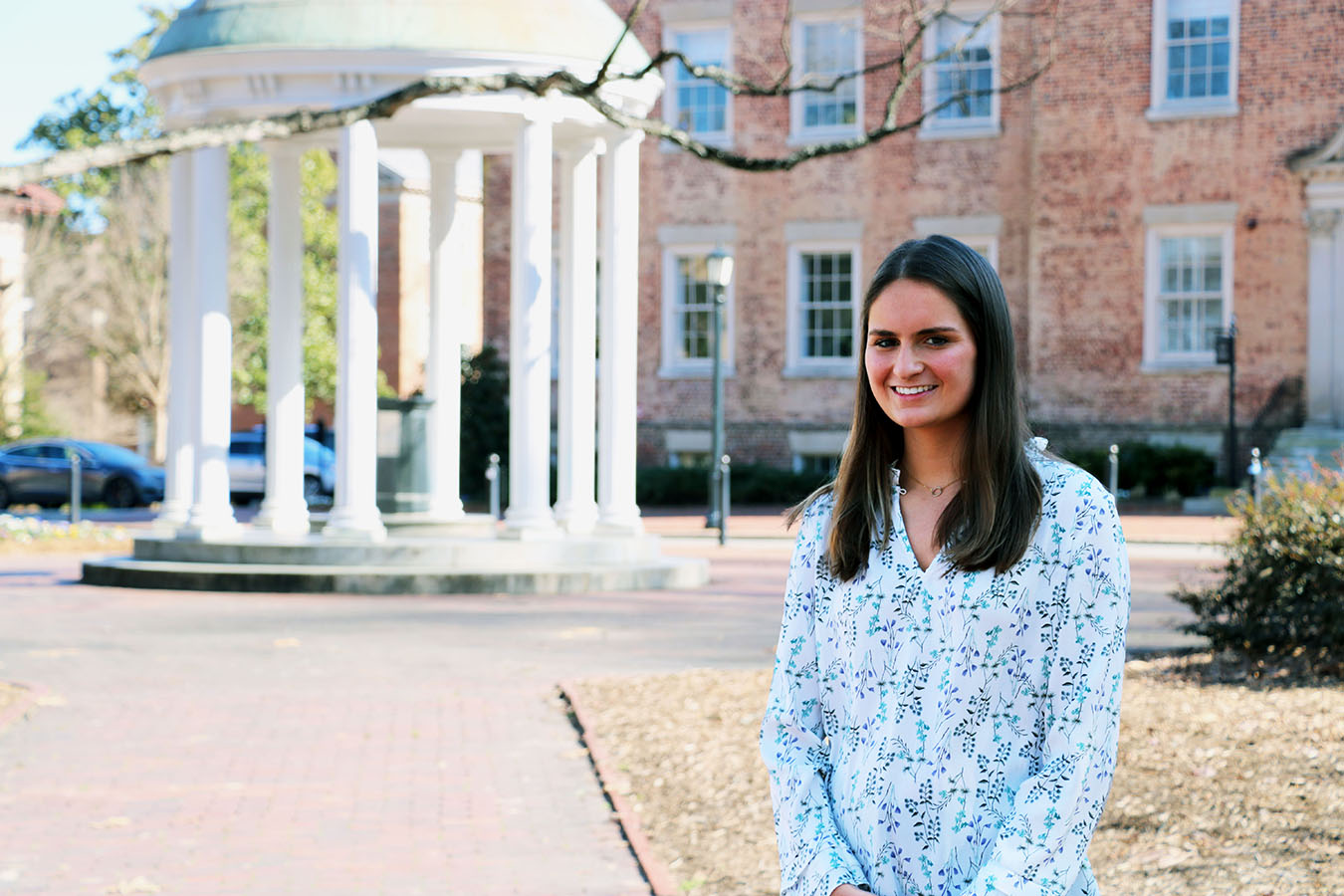
Research Spotlight: Taking Advantage of Virtual Opportunities
March 16, 2021
Q: Where are you currently conducting research, and how did you find that opportunity?
A: I’ve been working in the Stein Lab since last August. I had been searching for a lab position when the pandemic hit, so that put a little halt on my search. As a quantitative bio major – and knowing I would be at home all semester – I looked into computational research opportunities. CSS put me in touch with Dr. Mohanish Deshmukh, who recommended me to some labs, and from there I was able to join the Stein Lab, in the Department of Genetics and the UNC Neuroscience Center. It’s a really awesome lab, really friendly, and I can tell that they genuinely take pride in their mentorship.
Q: What kind of research projects have you been able to work on remotely?
A: I’m working on a project called Segmentor, which is a software developed by the lab to help image MRI brain scans. The goal is to be able to count how many neurons are in someone’s brain and see if that is connected to any psychiatric disorders like autism. Currently, there’s no quick way to count how many neurons are in your brain, because there are billions of them. You have to count them all manually, and it just takes a really, really long time. So, they’ve developed machine learning software and an algorithm to automatically count these cells. The problem right now is that it’s pretty inaccurate – it might clump cells together or just miscount them – so to make it more accurate, we need to feed a lot of good data into it so it can learn what cells actually look like.
Over time, we hope to turn this into a Citizen Science Project, so that anyone can just log on and count cells to contribute towards the data – making it fun, like a game. I also think it would be a great first step into research for high schoolers because you can count cells without an extensive science background.
Q: Have you always been interested in quantitative biology?
A: I actually used to be a computer science major. My dad and brother are both computer scientists, and my mom uses R [programming language] a lot, so I’ve always been really interested in that field. I’m also pre-med, and when you’re taking organic chemistry you don’t always have all the extra hours needed for comp sci courses, so I switched to quantitative biology. It was really hard to let go of computer science, but my work in the Stein Lab has shown me the power of machine learning and how important artificial intelligence is for future research, so I’ve been able to blend a lot of my interests together.
Q: How did those interests lead you to your second virtual research internship?
A: In the fall, I received an email from the biology department about an unpaid internship opportunity with the Biomedical Cybernetics Lab of Brigham and Women’s Hospital/Harvard Medical School that caught my eye for two reasons. First, it mentioned using artificial intelligence for drug discovery. Second, Brigham and Women’s Hospital is actually where I was born, so it was a cool full-circle moment for me. We moved away from Boston when I was six, but I always said I would go back. Now I sort of have, even if it’s just through a remote internship.
Q: Can you share a bit about your research project there?
A: The lab works on a lot of different interdisciplinary things, and right now I’m working on a project that is looking at longevity and medicines that help you live longer. I’m learning R and doing a lot of statistical analysis to study treatments that are applied to mice and seeing how that impacts their longevity. I have also gotten to review and edit the lab’s proposals. I’ve really liked this aspect of the job, because I get to learn about many different projects in the lab. Even though I’m not directly involved with those projects, I still get to explore the science behind them. It has also helped me learn how to better understand high-level scientific writing, because in order to edit it, I have to first be able to digest it!
Q: What has been the most impactful takeaway from this internship experience?
A: This internship has been a very independent experience. The lab mentors really want to foster my ability to look things up, to learn things and apply them, and I think that’s a great skill that I’ll use at any other job in the future. When I’m presented with a problem, I won’t just freeze up; I’ll have the confidence to look things up and know that I’ll be able to figure it out.
It’s also been neat to see how interconnected the science world really is. For my internship project, I’ve been able to download packages of R with pre-made code that I can use on my data. I was trying to figure out one package, and I realized it was made by someone who works with the Stein Lab at UNC. We’ve been in the same lab meetings. So I reached out to him for a little guidance, and he took the time to help me figure out what I needed. I thought that was an amazing coincidence that just reinforces the collaborative nature of research and the importance of UNC’s role in scientific advancements.
